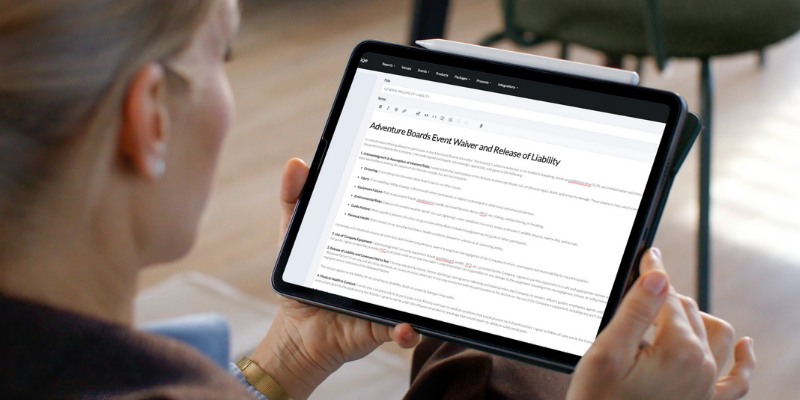847280
Assigned seating, when done right, is like a symphony – everyone in their place, enjoying the show. But when it goes wrong? It's more like a middle school band trying to tune up.
When it’s done right, assigned seating offers your guests maximum control over their event experience: they get that premium "I know exactly where I'll be" feeling. But it can also lead to some serious headaches if not handled right. Whether you’re organizing a sporting event, live theater show, concert, or something entirely different, let’s explore the highs and lows of assigned seating—and what you can do to avoid these disasters.
When Assigned Seating Isn't Your Friend
First things first, let's talk about knowing when not to use assigned seating. It sounds counterintuitive, right? More control = better? Not always. Here are three scenarios when assigned seating might not be right for your specific event.
-
The "Chill Vibe" Killer: If you're running a laid-back event, like a casual food festival, a small music gig in a bar, or a pop-up art show, assigned seating probably isn’t necessary. People want to mingle, wander, and choose their own adventure. Turning that into a rigid seating chart just makes things feel stuffy, and can lead to more confusion for your guests.
-
The "Flexibility Fiasco": Events with fluctuating attendance or activities, like workshops or interactive performances, are often better suited to general admission or sectional seating. You need that wiggle room to adapt on the fly.
-
The "Overkill Conundrum": If your venue is small and intimate, or if the event is short and informal, assigned seating might be overkill. You're adding complexity for little to no benefit. This also applies if you have a very large venue but typically fill only a portion of the seats.
Need some help deciding if assigned seating is right for your event? Read more about seating options in our guide.

The Pitfalls: Where Assigned Seating Goes South
Okay, so you've decided assigned seating is the way to go. Now, let's avoid these common slip-ups:
1. The "Staff Stumble"
Your staff is the frontline of your event. If they're clueless about the seating chart, you're in for a world of confusion. It's not just about knowing the layout; it's about being able to quickly and calmly direct guests, resolve seating conflicts, and handle those "where's my seat?" panics.
Comprehensive staff training is non-negotiable to prevent these kinds of issues. Provide clear, easy-to-read seating maps, and make sure everyone knows how to use your ticketing system.
2. The "Flat-Rate Folly"
Charging the same price for every seat is a revenue-killing mistake. Prime seats, like those front and center or with the best views, are worth more. So give your guests the option of securing those in-demand seats, and allow guests who prefer to save money to book a seat in a different area of your venue.
This problem can be solved simply by implementing tiered pricing. If you’re using Passage as your ticketing platform, you can easily create different price points based on seat location. This not only maximizes revenue but also gives guests options based on their budget.
3. The "Map Mayhem"
Maps are one of the most-overlooked details for events using assigned seating. Guests need to be able to easily find their seats when they arrive at your venue. An unclear or poorly designed seating map—or not having a map at all—is a recipe for disaster.
Print out high-quality, clearly labeled maps, or consider using digital displays or wayfinding signage inside your venue. Post them just inside the entrance, or in high-visibility areas. You may also want to provide your staff with handheld printed maps, or at least a digital version so they can direct guests. Make sure the maps are accurate, and reflect the physical seating arrangement.
4. The "Accessibility Oversight"
Forgetting about accessibility needs is a major oversight. You need to ensure your seating chart includes accessible seating options for guests with disabilities.
Clearly mark accessible seating areas on your map and make them easy to book through your ticketing platform. Ensure you have the proper ramps and access points in your physical venue.
5. The "Last-Minute Shuffle"
Making last-minute changes to the seating chart is a logistical nightmare. It leads to confusion, double bookings, and a lot of angry guests.
Finalize your seating chart well in advance. If changes are absolutely necessary, communicate them clearly and promptly to affected guests. With Passage, for example, you can send a message to all ticketholders for any future event, so you can notify them of any unavoidable changes that you need to make.

Final Thoughts
Assigned seating can be a fantastic way to offer guests more choices when attending your event, but it requires careful planning and execution. By avoiding these common pitfalls, you can create a smooth, enjoyable experience for your guests and maximize your event's success.
Need some help setting up assigned seating or sectional seating for your event? We’d love to help! Schedule some time with an assigned seating expert and we’ll set everything up for you. So you can focus on planning an amazing experience for your guests.












